Adding mason bees to your pollination arsenal is a year-round commitment — incubating, placing, collecting, cleaning.
But one Washington tree fruit orchard that tried the solitary pollinators in 2021 liked the results and plans to place them again this year.
“Yeah, it’s a little bit more work, but you assign a certain person to do the job and do it all the way through,” said Lisa Aceves, a supervisor for Campbell Orchards in Tieton.
Mason bees, also called blue orchard bees, are native to North America. They fly and work blooms earlier in the season, when the weather remains a little too cool for honey bees. They also spend most of the year inactive, nesting and surviving as cocoons as soon as pollination ends, making them relatively easy for an orchard employee — not a trained beekeeper — to recapture, store and replace the following year.
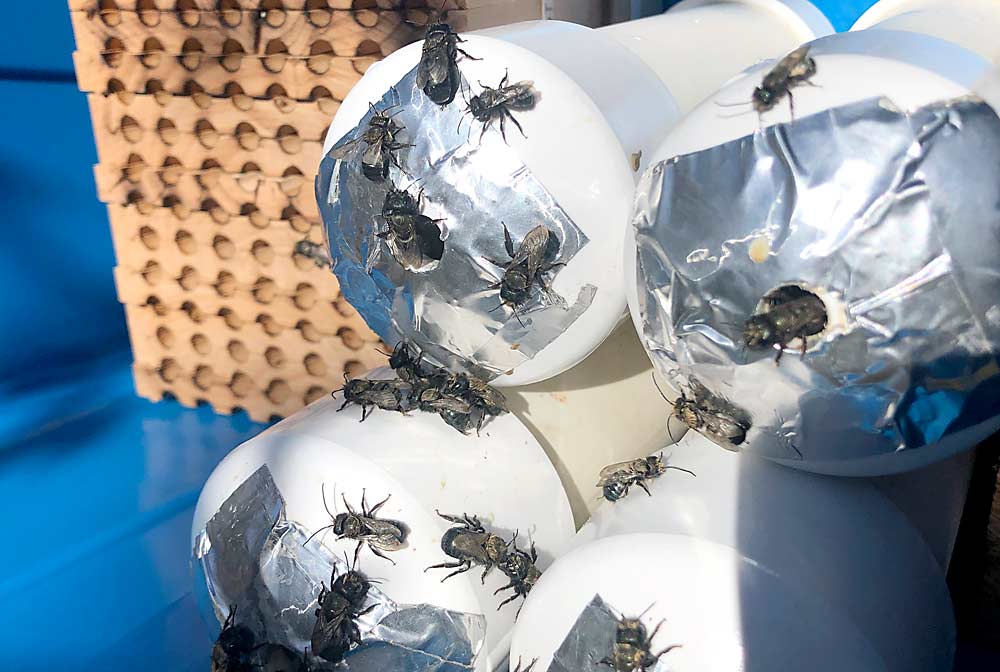
Campbell Orchards, located in a hilly area with relatively cool weather during pollination, still orders their usual honey bee colonies, but they placed mason bees in about 60 acres, half cherries and half apricots, in 2021. Fruit set and production seemed to improve in all 60 acres, especially for a pollination year marked by unfavorable weather swings, Aceves said.
The crews also collected a healthy brood of bee cocoons for the next year in the northern parts of the orchards — the cherry block and half the apricots. However, on the south side, bee capture was poor.
Aceves doesn’t know why but guesses the sandier soil and windier conditions may play a role. Still, she and the farm managers plan to redeploy the bees in 2022 in at least the areas with good bee return.
Chores
If there’s a knock on the use of mason bees, it’s the extra labor needed at a time when labor is arguably the most premium input for a tree fruit orchard.
Good Fruit Grower visited Campbell Orchards several times over the course of 2021 to get a feel for the chores. For example, a few days before pollination, crews fill white PVC tubes with cocoons and store them at room temperature to encourage emergence. Workers dig a small hole under each bee shelter and keep it damp, so the bees have a source of nesting mud. In the winter, someone must clean the nesting blocks board by board.
None of the tasks are necessarily hard or complicated, but the jobs fall to the orchard crew, not a hired beekeeper who loads up the colonies and whisks them out of the way once they have rendered their services.
Aceves considers the extra work just part of farming.
“If you want a good crop, you have to be willing to work for it,” she said.
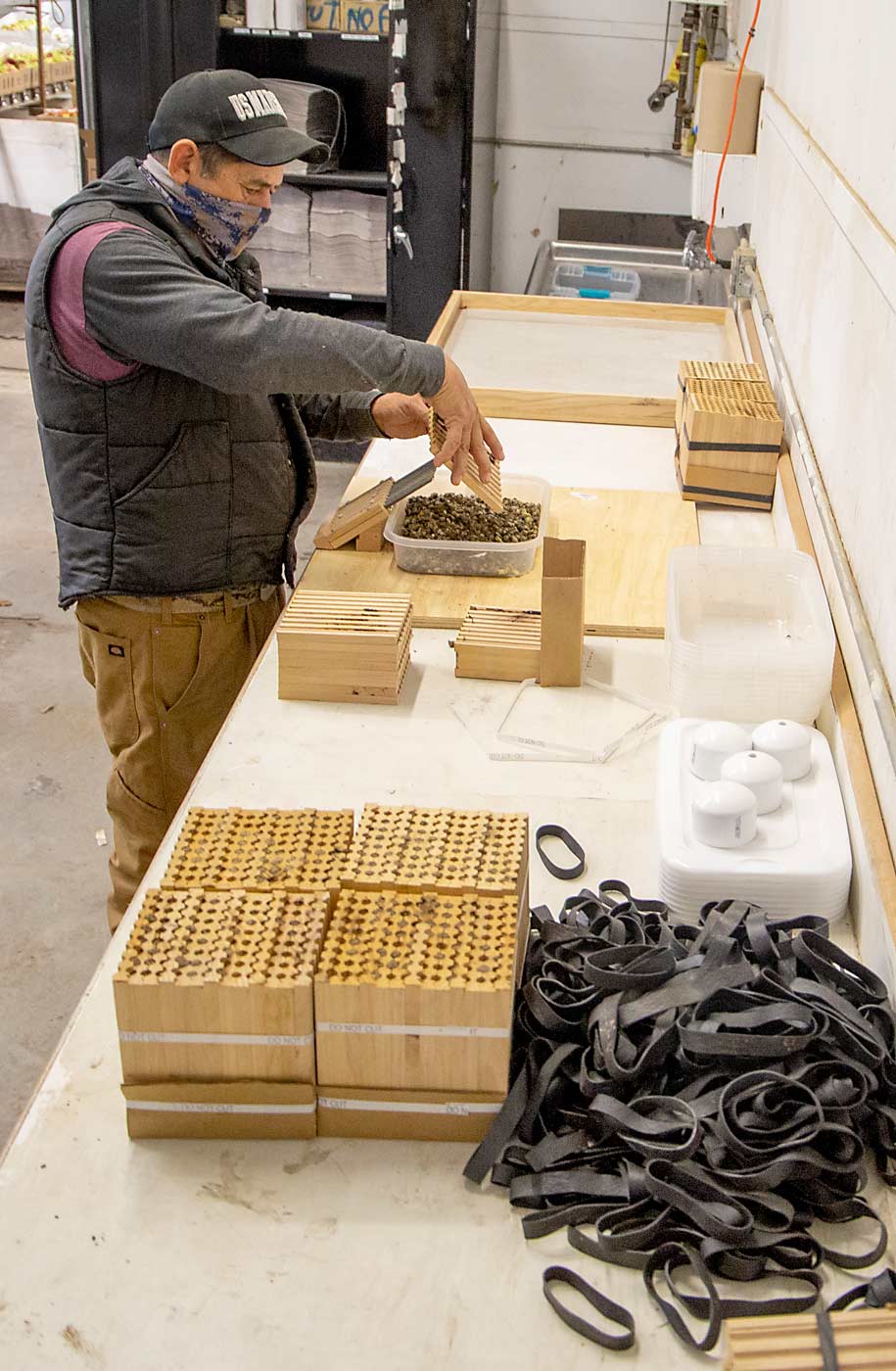
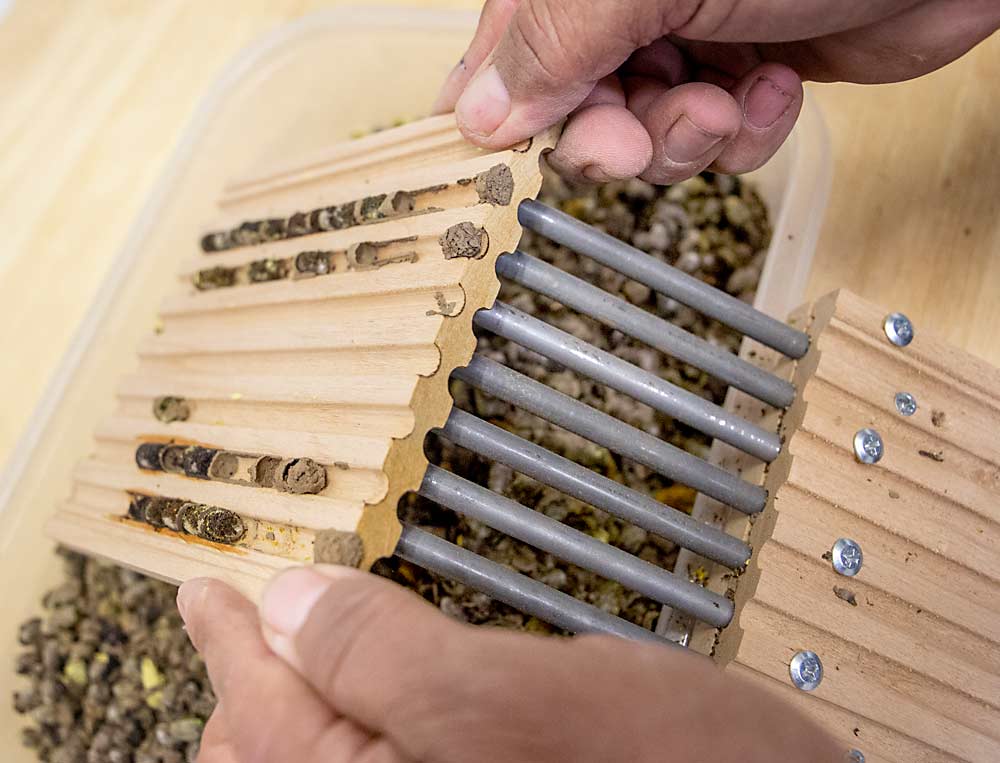
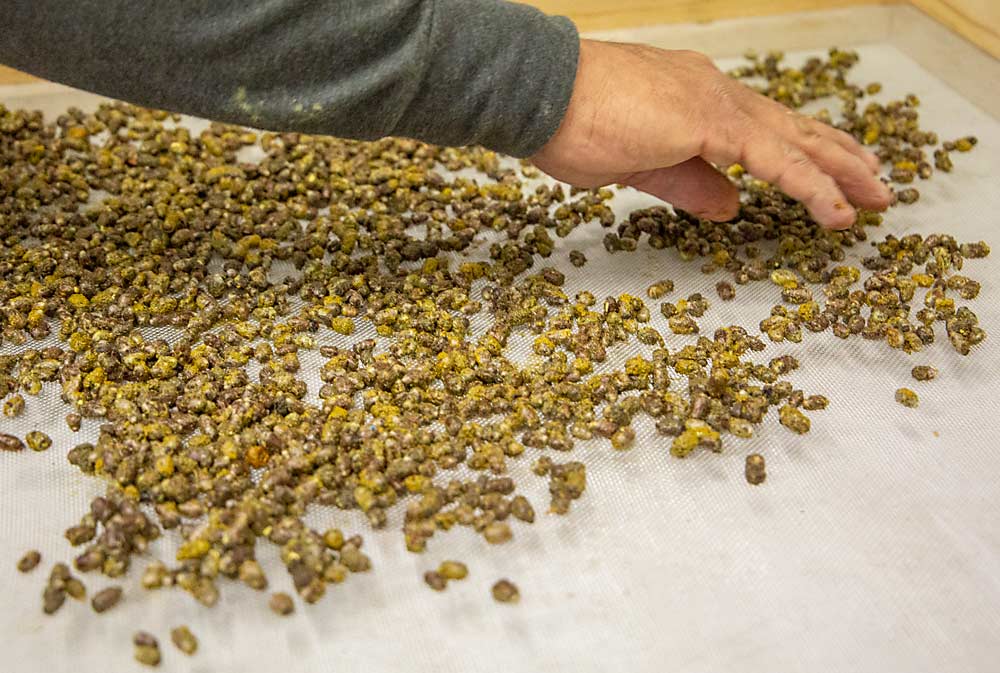
Jim Watts, owner of Watts Solitary Bees, offers ways to reduce the labor load for growers that scale up their mason bee use to a certain acreage level. The Bothell, Washington, company has developed a cleaning machine that fits in a pickup and can be fired up and running within 20 minutes of arrival. If growers have at least 100 acres or so, Watts and his team will pack up the machine and visit them.
“That makes a big difference,” he said.
So far, he is not charging customers for the machine cleaning service.
A friend of his nicknamed the machine the BOB harvester. Blue orchard bees are one species of mason bees.
Most of Watts’ customers are almond growers in California, where he helps maintain bees for thousands of acres. Two years ago, his staff worked by hand, cleaning 2,000 acres’ worth of bees in 23 days. Last year, they covered 3,000 acres in only seven days. He also provides leafcutter bees to alfalfa farmers.
Watts considers Northwest tree fruit his next growth area. Campbell Orchards and an Oregon blueberry farmer who uses mason bees on about 90 acres are his only two large customers so far. The rest are hobby gardeners, which renders the mason bee industry mostly retail driven.
“We don’t have any big growers yet, but we’re getting there,” he said.
The bees cost about $300 for 1,000. Tree fruit needs anywhere from 500 to 1,000 bees per acre, depending on crop and conditions.
Sometimes, growers will have to purchase more bees to supplement their population, but not necessarily every year. Sometimes they recapture 100 percent or more.
He recommends interested growers commit to three years before making up their minds; fruit set can jump or fall any single year based on the weather.
“We tell our growers to think of it as a three-year trial,” he said.
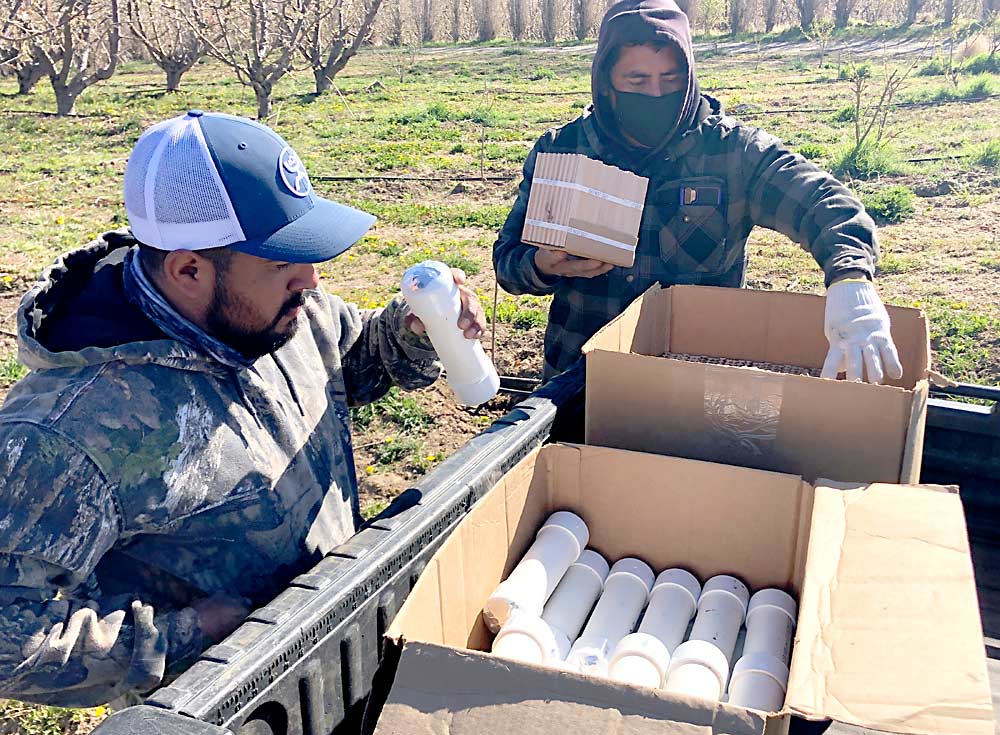

Step by step
Considering mason bees? Think of handling the solitary pollinators as a yearlong project with steps scattered throughout the calendar.
Mason bees hibernate during the winter as cocoons in covered plastic trays — the kind you’d find in any home kitchen — stored in refrigerators or cold rooms. Here’s the process:
—A few days before release, transfer the cocoons to PVC tubes kept at room temperature to encourage emergence. Cover the escape hole on each tube with foil tape. Each tube should hold about 250 cocoons, said Jim Watts, owner of Watts Solitary Bees. Any less, and they won’t cover enough blooms; any more, and they are too crowded before flight.
—Create shelters using plastic tubs with hinged lids, mounted roughly at chest-level throughout the orchard, facing the morning sun. Close the lids when spraying.
—Dig small holes under each shelter and make sure they stay damp throughout bloom to provide nesting mud. Add pottery clay if your soil is sandy.
—Cut away the foil tape and place the incubation tubes in the shelters alongside wooden nesting blocks, which feature tube-like caves for egg laying, where larvae will hatch, feed on pollen and form cocoons for dormancy.
—After bloom, collect and store the nesting blocks in ambient temperature.
—Sometime in late fall or winter, whenever time allows, collect the next year’s population by dismantling the nesting blocks, scraping loose the cocoons, picking away pollen and mud, rinsing them in a bleach solution and drying them on a screen.
—Refrigerate the cocoons in plastic trays until the following spring, when it all starts over again.
—story and photos by Ross Courtney

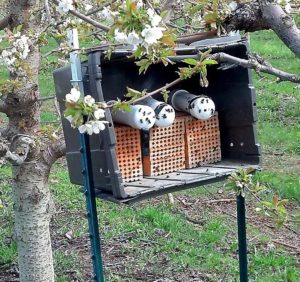
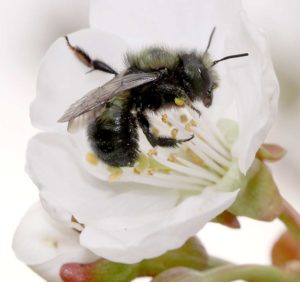





Leave A Comment